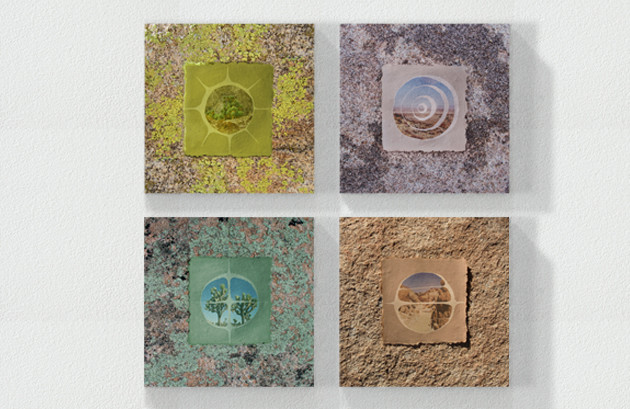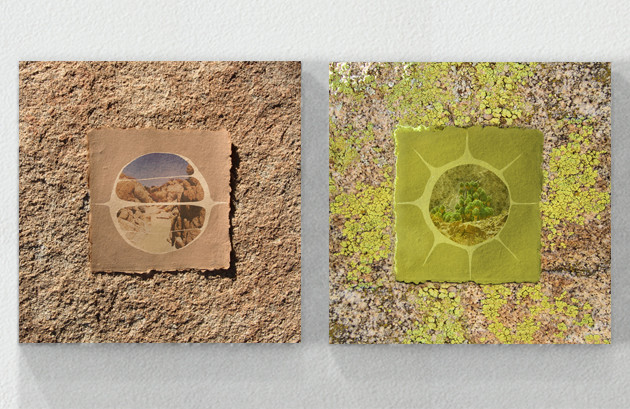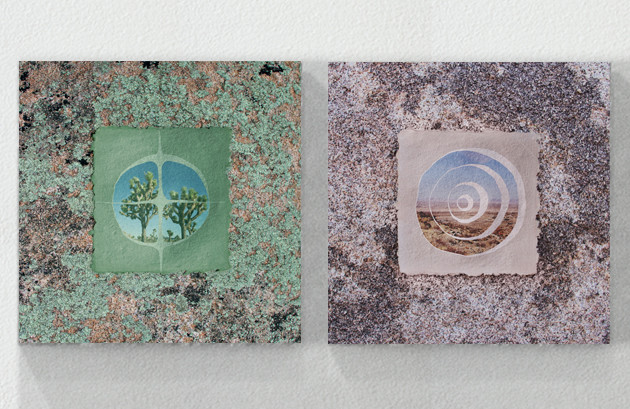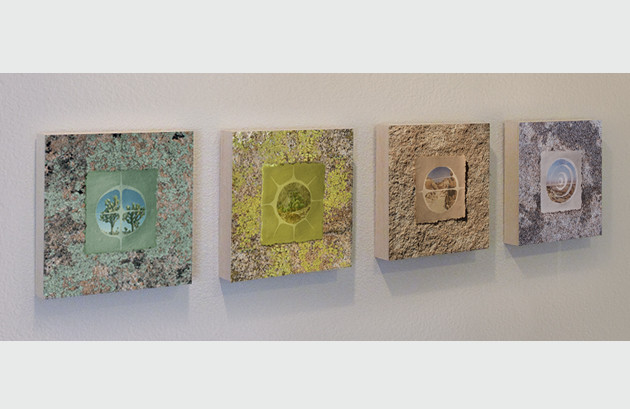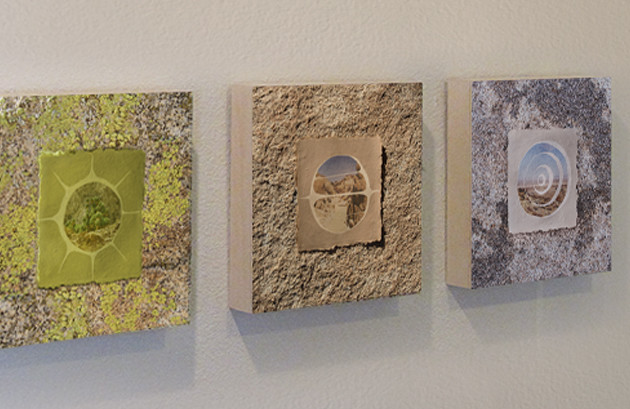As I traipsed across fantastic permutations of the land itself—layered, twisted, cracked, folded, and exposed by the elements—I listened to the changing rhythm and timbre of my own footsteps on solid stone, versus those on gravel, or sand. I watched extraordinary rock formations change color and get thrown into deep chiaroscuro by the setting sun. I observed an array of textures splayed across giant boulders, altered by desert patinas, lichens, or human hands.
It may be that the pictograms and petroglyphs found on boulders throughout Joshua Tree National Park map routes to food or water, or show the way to places of spiritual importance. They might tell stories, or mark the passing of time, or perhaps they even serve as portals between this world and the next.
But we will never know. These are old languages, and purely visual, and their meanings are lost.
Paper is a more portable surface—easily bought and sold. Creative acts have become commodities. And yet some of them still provide passage.
To make these pieces, hand made sheets of paper were temporarily affixed to actual rock surfaces, and photographed. They were digitally collaged with reinterpretations of common pictographic symbols found in the area, and iconic images of the landscape. Then they were printed, again on paper, and mounted to wooden panels.
Paperglyphs
Digital prints on archival paper, mounted on wood panels
Forest • Oasis • Canyon • Mountain
Each panel: 10″ x 10″

